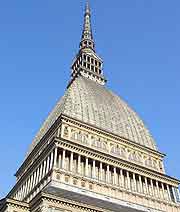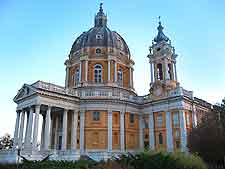Turin History Facts and Timeline
(Turin, Piedmont, Italy)

Turin was first settled by Celtic tribes, probably around 200 BC. They stayed here relatively undisturbed until the Roman Empire expanded ever further northwards.
When the 1st century AD arrived, Turin became first a Roman military camp and then a city. It was to remain under Roman control for several centuries. Then, with the collapse of the Western Roman Empire, the city was invaded by Barbarian groups, including the Visigoths and also the Franks. The face of the city remained relatively unchanged throughout this period of its history and even into the Middle Ages. Medieval Turin was very much dominated by the Church.
From the Renaissance to the 17th Century
During the Renaissance, the city witnessed great changes, most notably in its art and architecture. Rival cities tried to outshine each other in terms of their buildings and elaborate architectural decoration. During the 15th century, Turin fell under the control of the Savoy family, who were of French origin. The Duke of Savoy chose Turin as his official residence, thus consolidating the city's importance. In 1498, Bishop Domenico Della Rovere commissioned an Italian architect to construct the Cathedral of San Giovanni, a fine example of local Renaissance architecture.
In the early 1500s, Turin became embroiled in the Franco-Prussian War. Consequently, the city strengthened its defences, which included a series of bastions. The French were finally defeated at the Battle of San Quintino, and Duke Emmanuel Philibert (Filiberto) won back his lands, including Turin.
With the declaration of peace in 1559, Turin became the new capital of the Savoy state - a momentous moment in its history. The city's government was very aware of its vulnerability at this time. Huge amounts of funds were earmarked for the defence of the city. Its medieval fort was repaired and a citadel was built. Its principal gate, 'Il Mastio', is still standing to this day. Some expenditure also went on ambitious non-military projects around the city, including the landscaping of the Royal Park of Viboccone, to the north-east of the city centre.
In 1580, Charles Emmanuel I succeeded to the Dukedom and began to implement many inspired architectural projects. After extending the city southwards beyond its ancient walls, he was largely responsible for the city's grid layout, as well as the Piazza San Carolo, the Royal Palace and the Palazzo Madama.
The 17th century was a time of great civic pride, something that is clearly evident in the buildings that date to this period, from the Town Hall and the Church of San Lorenzo to the Cappella della Sacra Sindone, better known as the Chapel of the Holy Shroud. In the 18th century, educational reform became a priority and a new university building was constructed on the Via Po.
Turin became home to many great intellectuals of the day, as well as a number of enlightened reformers. Such developments were to be briefly interrupted by the outbreak of war with France, which culminated in 1706 with a siege. In the late 1700s, Turin was again occupied by the French army, this time under Napoleon, although this period of occupation turned out to be short-lived.

History of the Modern City
The 19th century was a time of instability and turmoil. Social discontent in the city led to the 1821 uprising. From the mid-1800s, Turin started to play a more important role in Italy's cultural and political life. This was one of the first cities to become part of a unified Italy. Indeed, for a very short time, it even held the position of capital city.
From the 1880s, Turin witnessed the opening of its first foundries and factories. The industrial boom continued well into the 20th century. In particular, World War One was something of a boon for the city's entrepreneurs, most notably those involved in the manufacture of motor cars. The Fiat motor car company set up factories in Turin, including its Lingotto complex. By 1918, Fiat had risen to fame in a dramatic fashion and now employed around 40,000 people.
Inter-war Turin was a hotbed of intellectualism, laying the foundations for a lively trade union scene in the city. It was also to single itself out as an anti-fascist city in Italy. On the outbreak of World War Two, a resistance movement was organised here, which continued to fight right up until its liberation.
In the post-war period, Turin grew from strength to strength in terms of its industrial might. In 1961, the Italia 61 complex was built as part of the city's centenary celebrations for Italian unification. Today, this is a leading financial and industrial Italian city, famed for its religious shroud.
 Turin was first settled by Celtic tribes, probably around 200 BC. They stayed here relatively undisturbed until the Roman Empire expanded ever further northwards.
Turin was first settled by Celtic tribes, probably around 200 BC. They stayed here relatively undisturbed until the Roman Empire expanded ever further northwards.